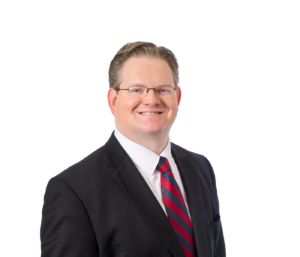 The Supreme Court’s June 27, 2018 Janus v. AFSCME decision may prove to be the most significant labor law case in half a century. The 5-4 case outlaws mandatory “fair share” fees for public employees who refuse membership in unions.
The Supreme Court’s June 27, 2018 Janus v. AFSCME decision may prove to be the most significant labor law case in half a century. The 5-4 case outlaws mandatory “fair share” fees for public employees who refuse membership in unions.
Early post-Janus analysis indicates that the ruling is having a severe financial impact on public sector labor unions in the 22 states – including Ohio. Prior to this case, the law had permitted the imposition of involuntary agency fee deductions from workers’ payroll.
In July, several state governments stopped collecting tens of millions of dollars in agency fees. For example, the state of New York did not collect between $9 and $10 million in fair share fees on behalf of public unions in that state. This does not even include fees formerly collected by county, local or school governmental entities.
The union membership rate has been falling in the private sector for decades, but has been holding steady at about 35% in the public sector for the past 35 years. Now that the public sector unions are seeing the early effects of dropping revenue and, likely, a drop in membership, they will have to reconsider their priorities and how they do business in order to adapt to these new realities.
The three largest public sector unions are the National Education Association at 3 million members; the American Federation of Teachers at 1.6 million members; and the American Federation of State, County, and Municipal Employees at 1.3 million members. According to the Department of Labor, these three unions collectively spent $119.8 million on “political activities” in 2017. This is a comparatively large sum in light of the $153.9 million these three unions collectively spent on representing their membership and organizing.
As a result of these financial pressures, skirmishes are beginning to crop up among Ohio’s 3,200 public sector bargaining units, and administrators should be prepared to address: (1) questions about how union members are permitted to withdraw membership, (2) whether the union’s withdrawal policy is lawful, and (3) what employers are permitted to say to their employees about withdrawal from the union.
Public employers must familiarize themselves with any withdrawal provisions contained in collective bargaining agreements. Recent cases have held that contractual “window periods” and union membership withdrawal requirements done via certified mail are lawful. More stringent requirements should be carefully analyzed by counsel to determine whether the requirements are arbitrary, discriminatory, misleading, ambiguous, or otherwise impermissibly restrictive. For instance, one recent case held that a withdrawal provision was impermissibly restrictive when it required a resigning union member to appear in person at the union hall with a valid photo ID and declare his intent to withdraw in writing.
Now more than ever, dissatisfied union members are turning to their own employers for help and advice when trying to get out of their union. While Ohio’s State Employment Relations Board has not yet squarely addressed which sorts of communications employers are permitted to have with their employees on the issue of withdrawal, employers should work closely with counsel. Together, they should formulate plans for communication with employees that are permissible within the bounds of the Ohio Public Employee Collective Bargaining Act. Public sector unions are already putting shots across employers’ bow on this topic. Backed into a corner, Ohio unions have already issued blanket written threats of filing unfair labor practice charges against public employers related to communications with employees.
Most importantly, employers should consciously take steps to:
- Protect their employees from unlawful pressure exerted on them to remain in the union, and
- Work with labor counsel to form solid proposals that bring collective bargaining agreements in line with current law and address the needs of the employer.
Public employers should work proactively through these considerations before they become potential problems.
Max Rieker is an attorney at Walter |Haverfield who focuses his practice on labor and employment law. He can be reached at mrieker@walterhav.com or at 216-928-2972.